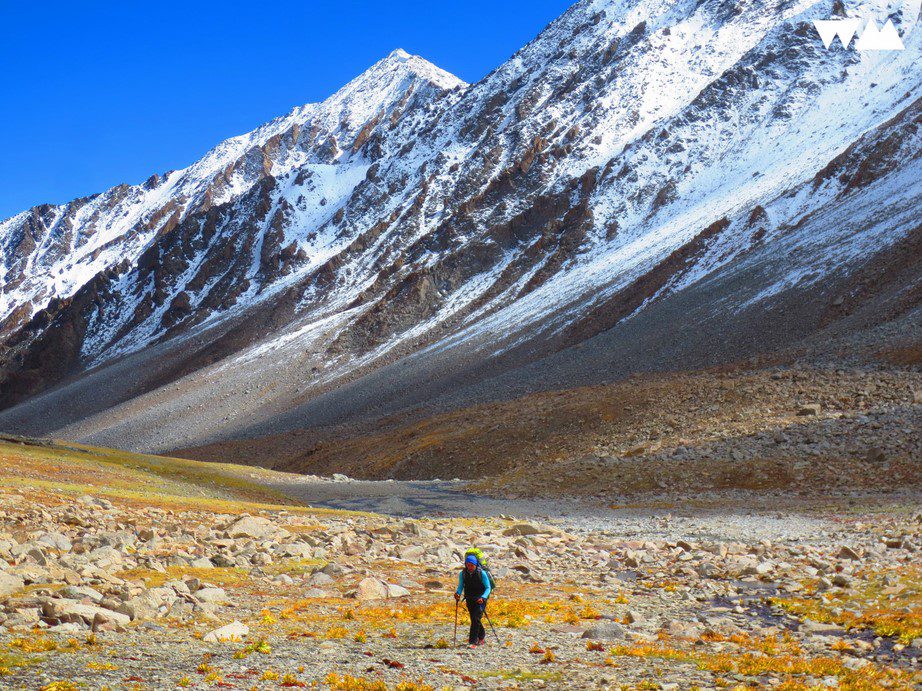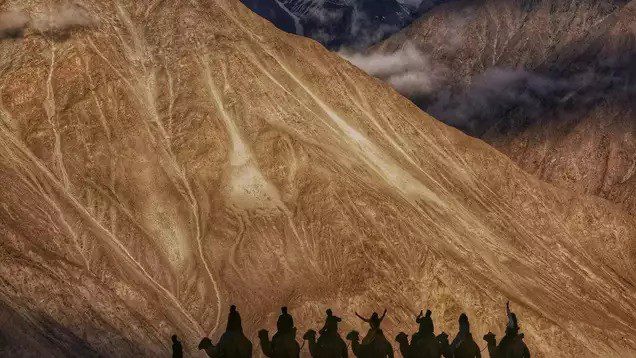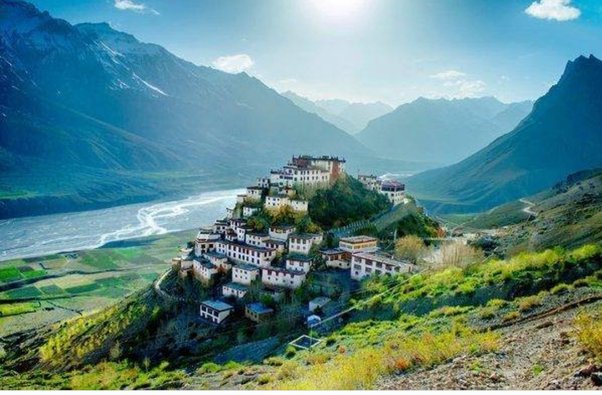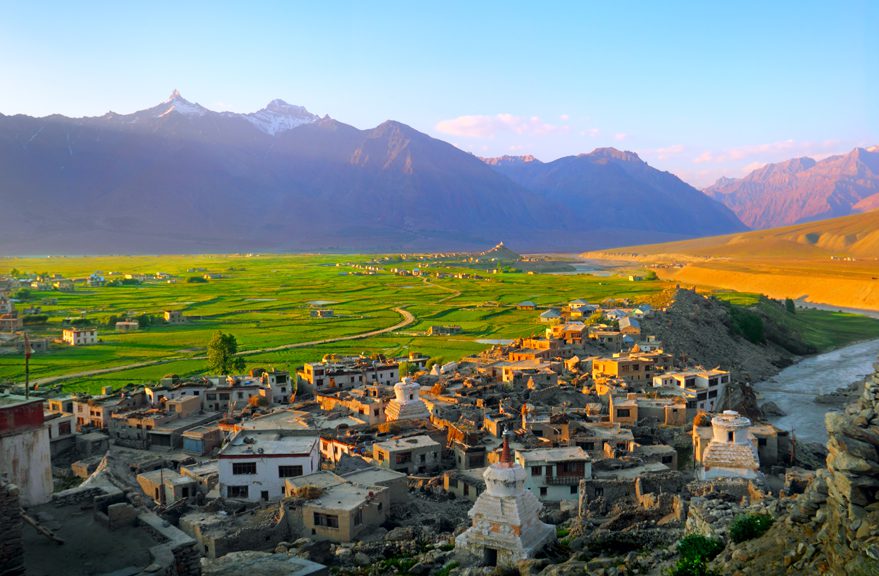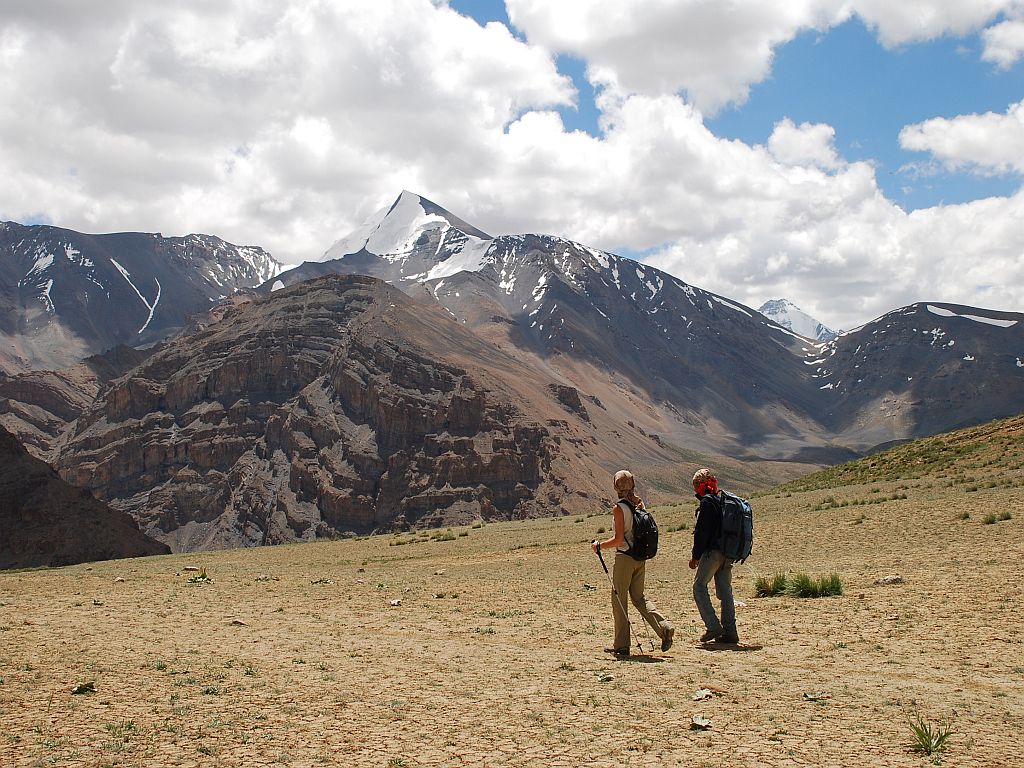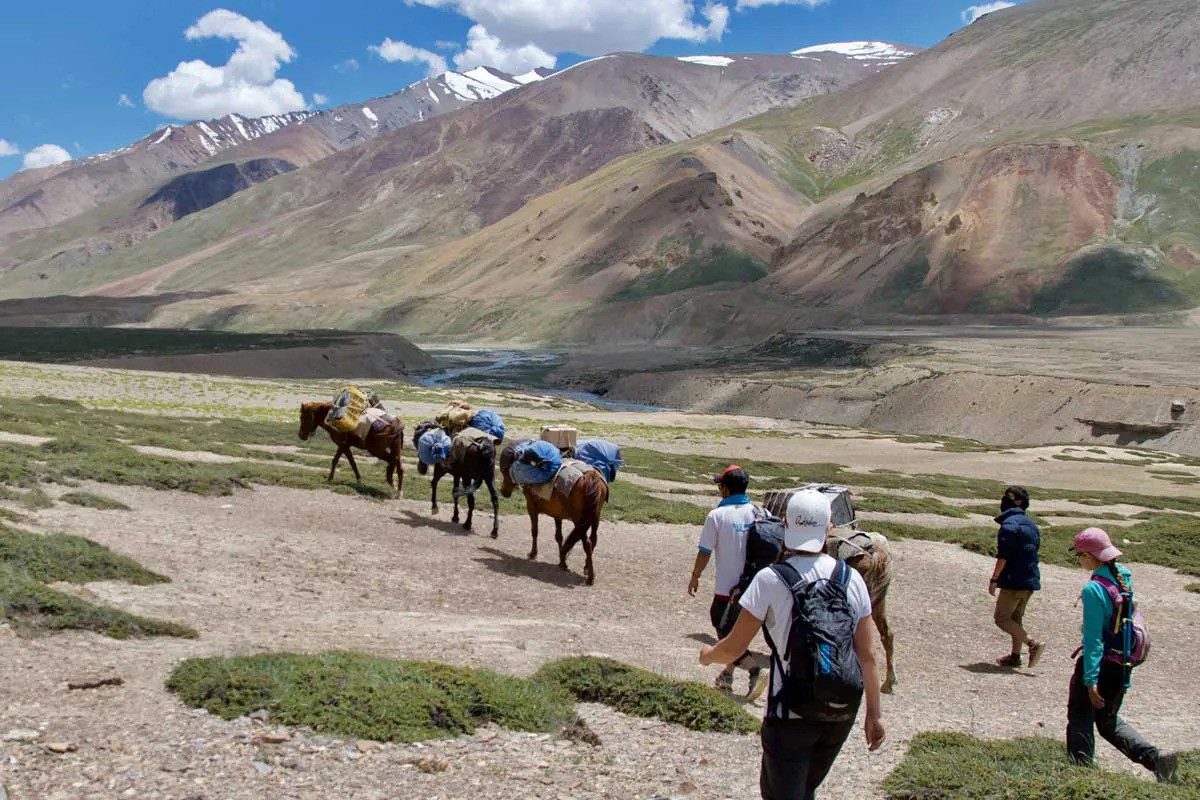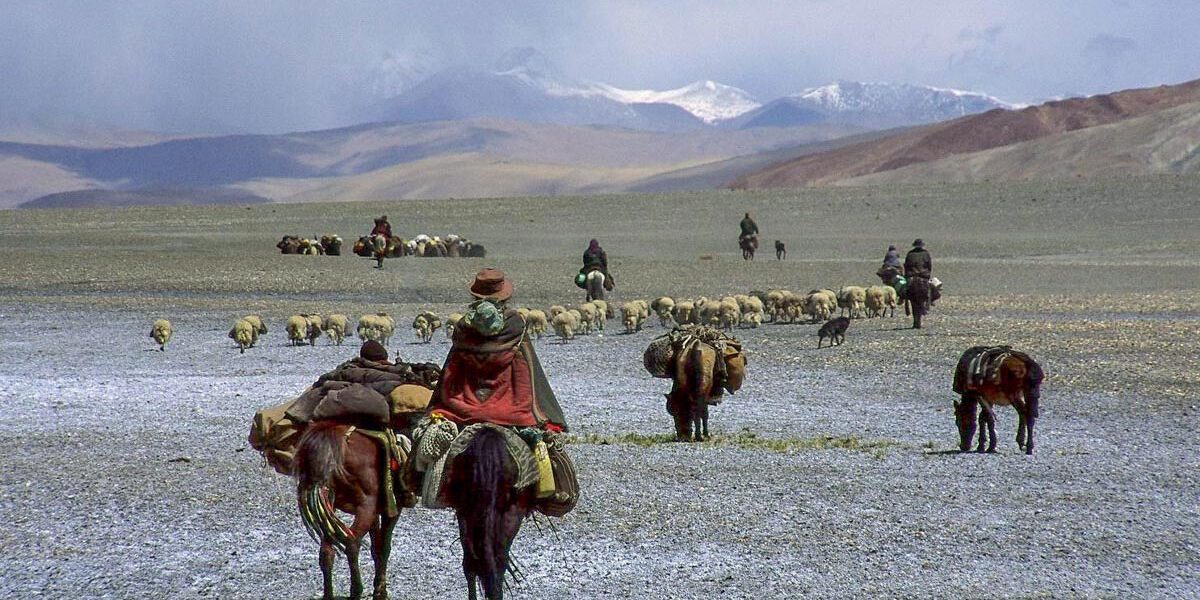Ladakh Ancient Trade Routes, with their breathtaking landscapes, remote high-altitude passes, and rich cultural heritage, have long been a crossroads for traders, monks, and travelers. This northern region of India served as an important junction between Central Asia, Tibet, and the Indian subcontinent. Laden with historical significance, Ladakh’s ancient trade routes are now attracting trekkers eager to walk in the footsteps of history. Join us on a journey as we unravel Ladakh’s ancient trade routes and explore the fascinating world of trekking through history.
Introduction to Ladakh’s Historical Trade Routes
Nestled between the mighty Himalayas and the Karakoram mountain range, Ladakh’s location made it a strategic hub for trade. Its ancient trade routes were once bustling with caravans carrying precious goods such as Pashmina wool, salt, and spices. These routes connected Central Asia, Tibet, and India, forming part of the greater Silk Road. For trekkers today, these ancient pathways offer an opportunity to experience Ladakh’s history while traversing some of the world’s most awe-inspiring landscapes.
“Trekking along Ladakh’s trade routes felt like stepping back in time. The blend of history and natural beauty was simply breathtaking. Highly recommended for any history buff or trekking enthusiast.”
— Emily Jones, Historian, United Kingdom
The Role of Trade in Shaping Ladakh’s Culture and Economy
For centuries, Ladakh was a vital link in the trade network between the East and the West. This interaction not only shaped its economy but also its culture. Buddhism spread through the region along these trade routes, with monks traveling between Tibet and India. Ladakh’s monasteries became not just religious centers but also important stops for traders. Additionally, the flourishing Pashmina wool trade—still thriving today—originated from nomadic tribes who herded sheep on the Changtang Plateau.

The constant flow of traders and travelers also brought a rich mix of cultures to Ladakh. The region became a melting pot of Tibetan, Indian, and Central Asian influences, which are evident in its architecture, festivals, and art.
“I’ve been on many treks, but none have felt as meaningful as this one. Learning how ancient trade routes helped shape Ladakh’s culture while walking the same paths traders once used was incredible.”
— Jasmin Patel, Cultural Enthusiast, India
Key Ancient Trade Routes in Ladakh
Ladakh boasts numerous historic trade routes, many of which are still accessible to trekkers today. Here are some of the key routes:
1. Leh to Yarkand Route
This route was part of the greater Silk Road, connecting Leh with the Central Asian city of Yarkand. Traders passed through high-altitude passes like the Karakoram Pass and the Shyok River Valley. While this route is challenging, modern-day trekkers can still follow portions of it, witnessing remnants of ancient caravanserais and trade posts.

2. Zanskar Valley Route
The Zanskar Valley was an essential link in the trade network between Tibet and India. This route is renowned for its isolation and untouched beauty, with trekkers walking through valleys, across rivers, and past Buddhist monasteries that once served as important rest stops for traders.

3. Spiti to Ladakh
The Spiti Valley route connects Ladakh to the neighboring Spiti region in Himachal Pradesh. It was a key route for the exchange of salt, wool, and grain. Trekking this route offers a chance to explore some of the most remote areas of the Himalayas.

“The Zanskar trek was nothing short of magical. The ancient monasteries we passed made me feel like I was part of history itself.”
— Michael Stevenson, Trekking Guide, Australia
Trekking Ladakh’s High-Altitude Trade Passes
Ladakh’s ancient trade routes traverse some of the world’s most dramatic high-altitude passes. These passes once served as crucial points of access for traders moving between regions. Today, they challenge modern-day trekkers with their steep ascents and stunning panoramas.
1. Karakoram Pass
The Karakoram Pass, sitting at an elevation of 5,540 meters, was one of the most important trade routes between Ladakh and Central Asia. Although the pass itself is closed to trekkers due to border restrictions, parts of the route leading to it are still accessible, providing spectacular views and a glimpse into the challenges faced by ancient traders.
2. Shyok River Valley
The Shyok River winds its way through some of Ladakh’s most remote and rugged terrain. The ancient trade route that followed the river was key for connecting Ladakh to the Silk Road. Trekkers today can enjoy scenic views of snow-capped peaks and glaciers while walking along paths once traversed by camel caravans.
“Crossing the Shyok River Valley was a humbling experience. Imagining traders doing this on foot or camel hundreds of years ago made me appreciate the effort it took to build and maintain these routes.”
— Ahmed Zafar, Adventure Enthusiast, Pakistan
Zanskar Valley: Trekking Through History
The Zanskar Valley offers one of the most exciting historical treks in Ladakh. This isolated region is often cut off from the rest of the world during the winter months, but in the summer, it opens up to trekkers who wish to explore its rugged beauty and historical significance.
Cultural and Religious Significance
Zanskar is home to ancient Buddhist monasteries like Karsha and Phugtal, which were key rest stops for travelers and traders. These monasteries are not only religious centers but also historical landmarks that offer a glimpse into Ladakh’s rich cultural heritage.
Challenges of the Trek
Trekkers should be prepared for long days of walking, river crossings, and high-altitude conditions. The rewards, however, are immense: sweeping views of mountain ranges, serene valleys, and the feeling of walking along paths that have been in use for thousands of years.

“Zanskar was the highlight of my Ladakh adventure. The landscape is otherworldly, and the sense of history is palpable. Walking through ancient monasteries along the trade route was something I’ll never forget.”
— Lara Singh, Backpacker, Canada
The Impact of Trade on Ladakh’s Monasteries and Villages
Ladakh’s ancient trade routes not only facilitated commerce but also led to the development of monasteries and traditional Ladakhi villages. Monasteries, such as Hemis and Thiksey, became vital centers for both spiritual life and commerce. Traders would stop here to rest, worship, and exchange goods.
Ladakh’s villages, especially those along the Changtang Plateau, grew as a result of the flourishing trade in salt, grains, and Pashmina wool. Trekkers passing through these villages today can still see the remnants of ancient trade posts and engage with the local communities who have preserved their centuries-old traditions.

“Visiting the monasteries was like stepping into a time capsule. The energy of these places, combined with the stories of the traders who once passed through, gave me a real connection to the past.”
— Sophia Martinez, Travel Blogger, Spain
Best Time and Tips for Trekking Ladakh’s Historical Trade Routes
The ideal time to trek in Ladakh is from June to September, when the weather is mild and the mountain passes are open. Trekkers should be well-prepared for high-altitude conditions, bringing warm clothing, sturdy footwear, and proper trekking gear.

Essential Tips:
- Acclimatize: Spend a few days in Leh to get used to the altitude before beginning your trek.
- Hydrate: Drink plenty of water to avoid altitude sickness.
- Respect local customs: Ladakh’s culture is deeply rooted in Buddhism, so always be respectful when visiting monasteries and interacting with locals.
- Hire a guide: Local guides are familiar with the terrain and history, ensuring a safer and more enriching experience.
FAQs on Trekking Ladakh’s Ancient Trade Routes
Q1: What are the most famous ancient trade routes in Ladakh?
The Leh-Yarkand route, Zanskar Valley route, and Spiti-Ladakh route are some of the most famous ancient trade routes trekkers can explore today.
Q2: How did the ancient trade routes impact Ladakh’s culture?
Trade brought a rich mix of Tibetan, Central Asian, and Indian influences, which shaped Ladakh’s architecture, religion, and art.
Q3: What is the best time to trek Ladakh’s historical routes?
The best time to trek in Ladakh is from June to September when the weather is most favorable.
Q4: What should I bring for trekking in Ladakh?
Trekking gear should include sturdy hiking boots, warm clothing, a first-aid kit, and a high-quality sleeping bag.
Q5: How challenging is trekking the high-altitude passes in Ladakh?
The treks can be physically demanding due to the high altitude, but with proper acclimatization and preparation, they are manageable for fit individuals.
Q6: Can I explore the Silk Route while trekking in Ladakh?
Yes, portions of the ancient Silk Route, especially the Leh-Yarkand corridor, can be explored during trekking expeditions.
Ladakh Ancient Trade Routes
Ladakh Ancient Trade Routes | The journey through Ladakh mirrors the very essence of unraveling unknown horizons, as its dramatic landscapes and unique cultural identity awaken the deepest sense of wonder and exploration. Ladakh Ancient Trade Routesdelves into this realm where inner peace intertwines with the wild, untouched beauty of Ladakh. From the snow-capped peaks to the serene monasteries, every step in Ladakh is a step toward self-discovery. The mountains, ancient paths, and unspoken mysteries stretch before travelers, offering a meditative experience where each encounter feels both effortless and transformative. Whether it’s trekking across remote valleys or sitting quietly beside a sacred lake, Ladakh invites those who seek a deeper connection to the natural and spiritual world.

The Ladakh Ancient Trade Routes’s Ladakh Ancient Trade Routes
The monasteries of Ladakh stand as living monuments to the region’s profound spiritual heritage. With origins dating back over a thousand years, these ancient structures are both places of worship and repositories of art, culture, and wisdom. Hemis Monastery, one of the largest in Ladakh, is renowned for its annual festival, featuring colorful mask dances performed by monks. The history of these monasteries reflects Ladakh’s role as a crossroads between India, Tibet, and Central Asia, where religious and cultural influences have intertwined over the centuries.
The Tibetan Buddhist influence is especially evident in the architecture and daily life of the monks. Prayer wheels, intricate murals, and the soft hum of chants fill the air as visitors explore the monastery grounds. Each monastery, from the remote Lamayuru to the awe-inspiring Thiksey, offers a window into the spiritual heart of Ladakh. These centers of meditation, learning, and community life continue to thrive, preserving traditions that have shaped Ladakh for generations.
Why Visit Ladakh for Ladakh Ancient Trade Routes?
Ladakh is a destination that transcends mere travel. It offers a journey that touches both the outer and inner landscapes, making it a perfect setting for those who seek to unravel their own unknown horizons. The region’s breathtaking scenery—from towering mountain ranges to hidden valleys—provides not just an escape but a space for contemplation and growth. Ladakh’s culture, deeply rooted in Buddhist practices, invites visitors to reflect on their own lives and the world around them.
Ladakh’s people, known for their warmth and hospitality, add to the richness of the experience. Villages like Sumda Chun and the legendary Nubra Valley introduce travelers to a way of life that is intricately connected to nature and spirituality. Staying in local homestays allows for immersive experiences where one can learn about traditional Ladakhi customs, share meals made from local produce, and participate in community rituals.

Beyond its natural beauty, Ladakh offers a unique opportunity to explore oneself. The vastness of the region’s plateaus and the clarity of its skies seem to mirror the vastness of the human spirit. Whether it’s standing atop a mountain pass at 18,000 feet or meditating in a centuries-old monastery, Ladakh helps unravel the unknown horizons within each traveler.
Finding the Best Ladakh Ancient Trade Routes in Ladakh
Finding the best places in Ladakh to experience “Ladakh Ancient Trade Routes” involves venturing off the beaten path. Ladakh’s lesser-known treks, such as those leading to secluded monasteries or high-altitude lakes, offer unparalleled opportunities for solitude and reflection. The Markha Valley trek, for instance, takes travelers through verdant valleys, ancient villages, and high-altitude passes, allowing for both physical and spiritual exploration.
Ladakh’s iconic lakes, including Pangong Tso and Tso Moriri, are ideal spots for quiet contemplation. Their still waters reflect the sky, creating a mesmerizing landscape that feels timeless and infinite. Sitting beside these lakes, especially at dawn or dusk, brings an overwhelming sense of peace and connection with nature.

For those interested in Ladakh’s spiritual heritage, exploring monasteries such as Alchi, Phyang, or Diskit can be a transformative experience. These sites are not just places of worship but also centers of art, philosophy, and wisdom. Visiting these monasteries, with their ancient murals and intricate statues, offers insight into Ladakh’s rich cultural tapestry.
Ladakh’s Atmosphere and Ladakh Ancient Trade Routes
Ladakh’s atmosphere is unlike any other place on Earth. The stark contrasts between the rugged mountains and the serene, tranquil monasteries create an environment that feels both raw and sacred. The traditional decor in Ladakhi homes and religious sites reflects this balance, with mud-brick houses adorned with prayer flags and colorful thangkas (Buddhist paintings) that add warmth and spiritual meaning to the space.

The interiors of Ladakhi homes, often simple and functional, are filled with symbols of devotion. Small shrines dedicated to Buddhist deities are common, and the air is often fragrant with incense. The use of earthy materials, like stone and wood, along with brightly colored textiles, creates an inviting and peaceful space, perfect for relaxation and reflection.
Traditional Ladakhi Cuisine
Traditional Ladakhi cuisine is an integral part of the region’s identity, offering a unique blend of flavors that reflect its harsh climate and remote location. Hearty, warming dishes such as thukpa (noodle soup) and momos (dumplings) provide the sustenance needed to endure Ladakh’s cold temperatures. Skyu, a thick stew made with root vegetables and barley, is another staple of the Ladakhi diet, designed to nourish both body and spirit.

Drinks like butter tea, made with yak butter and salt, are a must-try for anyone visiting Ladakh. This rich, savory drink is not only warming but also hydrating, making it essential for those venturing into the high-altitude regions of Ladakh. Chang, a local barley beer, is often enjoyed during festivals and community gatherings, adding a sense of joy and camaraderie to any occasion.
Live Cultural Ladakh Ancient Trade Routes in Ladakh
Ladakh is home to a vibrant cultural scene, with festivals and live performances held throughout the year. The Hemis Festival, which celebrates the birth of Guru Padmasambhava, is one of the largest and most famous events in the region. Monks dressed in elaborate costumes perform cham dances, which depict the triumph of good over evil. The energy of the festival, with its bright colors, rhythmic music, and elaborate rituals, draws visitors from around the world.
Other local festivals, such as the Losar (New Year) and Ladakh Festival, provide visitors with the chance to witness traditional dance, music, and crafts that have been passed down through generations. These events are more than just entertainment; they are a celebration of Ladakh’s rich cultural heritage and its deep connection to the spiritual world.
Trekking and Outdoor Activities Ladakh Ancient Trade Routes
Ladakh is a trekker’s paradise, offering some of the most stunning and challenging routes in the world. From the famous Ladakh Ancient Trade Routes, which follows the frozen Zanskar River, to lesser-known routes like the Sham Valley or Nubra Valley treks, Ladakh’s landscape offers endless possibilities for adventure and discovery. The high-altitude passes, such as Khardung La and Chang La, offer breathtaking views of snow-capped peaks and sprawling valleys.

Wildlife enthusiasts will also find Ladakh Ancient Trade Routes to be a haven for rare species such as the snow leopard, Himalayan blue sheep, and the Tibetan wild ass. Winter expeditions to spot the elusive snow leopard in the Hemis National Park are gaining popularity among wildlife photographers and conservationists alike.
The Importance of Preserving Ladakh’s Ladakh Ancient Trade Routes
Ladakh’s rich cultural and environmental Ladakh Ancient Trade Routes is under increasing threat from climate change and mass tourism. Preserving this unique region requires careful attention to sustainable tourism practices. Choosing eco-friendly accommodations, supporting local businesses, and participating in community-led conservation efforts are just a few ways that visitors can contribute to the preservation of Ladakh’s natural and cultural heritage.
Ladakh’s people have a long history of living in harmony with their environment, practicing sustainable agriculture, and maintaining a deep spiritual connection to the land. Visitors are encouraged to follow the same principles, leaving no trace and respecting the fragile ecosystems that make Ladakh so special.
Etiquette and Tips for Visiting Ladakh Ancient Trade Routes
Before visiting Ladakh, it’s essential to understand and respect the region’s customs and traditions. As a deeply spiritual place, Ladakh requires visitors to dress modestly, especially when visiting monasteries or attending religious ceremonies. Always ask for permission before taking photographs inside monasteries or of local people.
Medical Ladakh Ancient Trade Routes
Spa trail Ladakh Ancient Trade Routes
Ladakh Ancient Trade Routes

When Ladakh Ancient Trade Routes, remember to stay on designated paths to avoid damaging fragile ecosystems. Tipping is appreciated but not expected in most settings, and it’s important to carry cash, as many remote areas do not accept credit cards. Lastly, be mindful of altitude sickness and take the necessary precautions when traveling to higher elevations.
Conclusion: Enjoying Ladakh Ancient Trade Routes in Ladakh
Ladakh is a place where the physical and spiritual worlds converge, offering travelers a journey unlike any other. Whether you’re trekking across high-altitude deserts, exploring ancient monasteries, or simply sitting in quiet reflection by a mountain lake, Ladakh invites you to unravel your own unknown horizons. By respecting the region’s traditions and practicing sustainable tourism, you help ensure that Ladakh’s beauty and cultural richness will be preserved for future generations to explore and enjoy.
